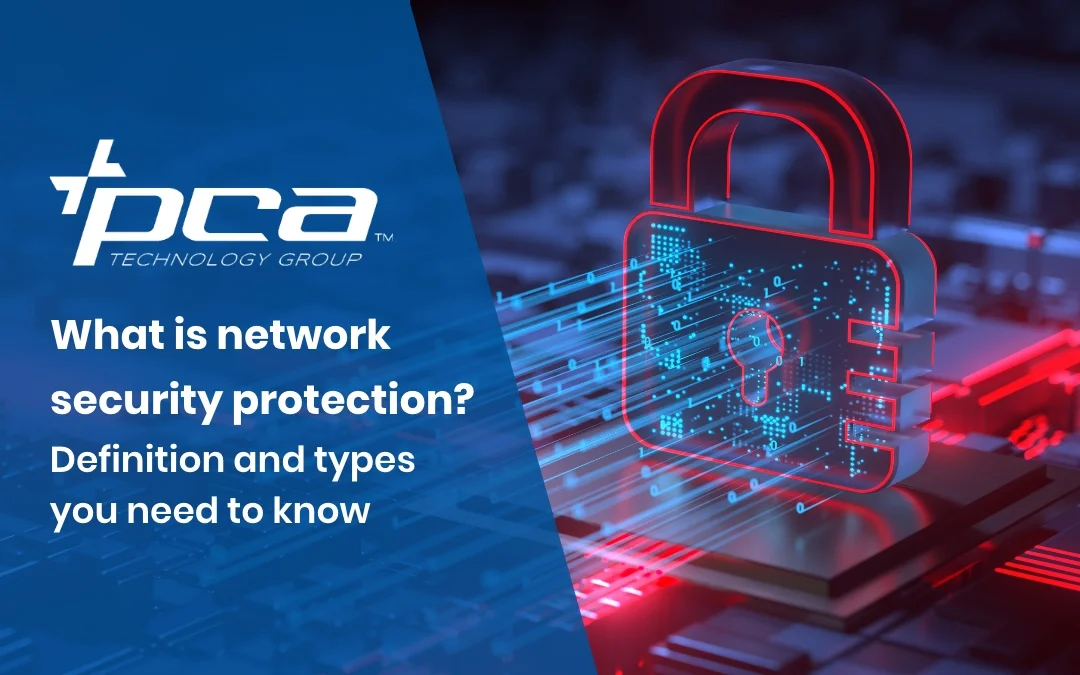Today, almost all our computers, smartphones, and other devices are connected to the internet, making them potential targets for cyberattacks. In fact, Netwrix’s 2023 Hybrid Security Trends Report found that 68% of organizations fell victim to a cyberattack within the last 12 months. IBM’s Cost of a Data Breach Report 2023 also revealed that the global average data breach cost is $4.45 million, up 15% from 2020’s.
This is why network security is more important than ever. Like gates, guards, and keys to a castle, network security protects computer networks from cyberattacks, minimizing the financial and operational impact of these attacks. It is important to understand the basics of network security so you better understand the steps you need to take to keep your business and its data safe.
What is network security?
Network security works as the primary defense of your digital world. It operates on three principles:
- Prevent unauthorized access: Network security acts as the gate, ensuring that only those authorized can enter your network and denying any others.
- Detect and stop cyberattacks: It acts as guards, constantly scanning for potential threats, and then actively responds to attacks in progress.
- Ensure secure access for authorized users: It acts as keys, giving authorized users convenient and secure access to network resources when needed.
What are the different types of network security technologies?
Network security encompasses the different technologies, processes, and practices used to protect computer networks and their associated devices from cyberthreats. Here are some of the common types of network security technologies:
Firewalls
Firewalls fulfill the first principle of network security, that of gatekeeper to your network. They examine incoming and outgoing traffic, allowing legitimate data to pass while blocking suspicious or malicious traffic. Firewalls can be positioned at the network’s perimeter or within, creating subnetworks that contain attackers even if they breach one part. Newer forms of firewalls incorporate such features as AI, application control, intrusion prevention, and threat intelligence feeds.
Network access control (NAC)
NAC regulates who and what can access the network and what actions they can perform. It does this by authenticating and authorizing users and devices before they are allowed to connect to the network. An NAC solution ensures that users gain access based on their roles, preventing unauthorized users of different departments or security clearances from accessing sensitive information.
Intrusion detection and prevention systems (IDPS)
An IDPS fulfills the second principle: scanning incoming traffic for security threats. Traditional intrusion detection systems only flag suspicious activity, while an IDPS flags and takes action by blocking traffic or resetting connections. An IDPS can even automatically react to potential breaches, making them effective against brute force attacks and denial-of-service or distributed denial-of-service attacks.
Virtual private networks (VPNs)
A VPN encrypts a user’s data, concealing their IP address and routing their connection through a secure server. VPNs have become more valuable with the rise of remote work. They allow remote workers to securely access corporate networks, even over unsecured public Wi-Fi connections in places such as coffee shops and airports. By using a VPN, remote workers can ensure that communications remain private and protected from potential interception.
Application security
Application security involves protecting apps and APIs from network attackers by using tools such as:
- Web application firewalls (WAFs): WAFs filter traffic to and from apps, blocking malicious requests.
- Runtime application self-protection (RASP): RASP tools monitor apps in real time and can block or mitigate attacks.
- Static application security testing (SAST): SAST tools scan app code for vulnerabilities before it is deployed.
- Dynamic application security testing (DAST): DAST tools test apps in real time by sending simulated attacks.
Email security
Email remains a prime target for cyberattacks. Email security tools help block phishing attacks and other attempts to compromise email accounts by filtering spam, blocking malicious attachments, and encrypting messages.
These are just some of the critical components of network security that work together to create an effective defense system. These layers of protection make it difficult for cybercriminals to attack your network and prevent data breaches.
By learning about network security basics and technologies, you can better protect your business, your data, and your networks.
Connect with PCA Technology Group to learn how we can improve your network security and make sure you and your customers are safe from cyberattacks.


